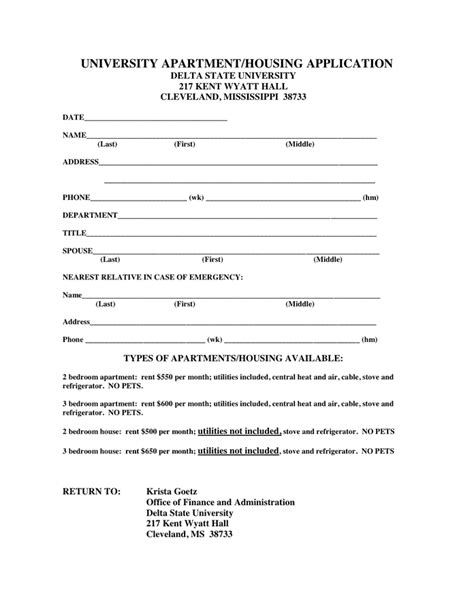Introduction

Finding suitable housing as a student at the University of Minnesota (UMN) can be a daunting task. With limited on-campus housing and a competitive off-campus market, securing a place to live can be stressful and time-consuming. This comprehensive guide will provide detailed information and tips to help students navigate the UMN housing application process, ensuring they find the best possible accommodation for their needs.
UMN Housing Options
UMN offers a range of housing options to students:
On-Campus Housing
- Traditional Residence Halls: Single or double rooms with shared bathrooms.
- Suite-Style Residence Halls: Private bedrooms with shared bathrooms and common areas.
- Apartment-Style Residence Halls: Fully equipped apartments with kitchens and private bathrooms.
Off-Campus Housing
- University Village: Owned and operated by UMN, offering a variety of on-campus apartments.
- Private Apartments and Houses: Rented from private landlords throughout the Minneapolis-St. Paul area.
Housing Application Process
The UMN housing application process typically opens in November for the following academic year.
Steps:
- Create an account: Access the MyU Housing Portal and create an account using your UMN student ID.
- Complete the application: Provide personal information, housing preferences, and financial details.
- Submit the application: Pay the $50 application fee and submit the completed application.
- Apply for financial aid: If applicable, submit a Free Application for Federal Student Aid (FAFSA) to determine eligibility for housing assistance.
- Receive a housing offer: Housing offers are typically made on a rolling basis.
Housing Timeline
The following timeline provides an overview of the UMN housing application process:
| Month | Deadline | Action |
|---|---|---|
| November | Application opens | |
| January 15 | Priority deadline for first-year students | |
| March 1 | Deadline for all other students | |
| April | Housing offers begin | |
| May | Acceptance deadline for housing offers |
Tips and Tricks
- Apply early: Submit your application as soon as possible to increase your chances of receiving a preferred housing assignment.
- List your preferences: Clearly indicate your preferred room type, location, and roommate preferences on the application.
- Provide documentation: Submit any supporting documentation, such as financial aid paperwork or proof of income, to enhance your application.
- Consider a roommate: Sharing a room or apartment can significantly reduce housing costs.
- Explore off-campus options: Contact private landlords and explore off-campus housing websites to find alternative accommodations.
Common Mistakes to Avoid
- Waiting too long to apply: Late applications may result in limited housing availability and higher costs.
- Not submitting supporting documentation: Failure to provide required documentation can delay or jeopardize your housing offer.
- Not listing roommates: Leaving the roommate preferences section blank may result in random room assignments.
- Overlooking off-campus options: Restricting your search to on-campus housing may limit your options and increase competition.
- Signing a lease without understanding the terms: Carefully review all lease agreements and understand the financial obligations and responsibilities involved.
Importance of UMN Housing
Secure and affordable housing is crucial for student success. It provides:
- Stability and security: A stable living environment helps students focus on their studies.
- Academic support: On-campus housing often offers academic resources and support services.
- Social opportunities: Residence halls foster community and provide opportunities for socialization and networking.
- Access to amenities: On-campus housing typically includes amenities such as laundry facilities, fitness centers, and dining halls.
Benefits of UMN Housing
UMN housing offers numerous benefits for students:
- Convenience: On-campus housing is located within walking distance of academic buildings and campus amenities.
- Safety and security: University-controlled housing provides a safe and secure living environment.
- Meal plans: On-campus housing includes access to meal plans that provide convenient and affordable dining options.
- Community events: Residence halls host social events and activities that foster community and engagement.
- Housing assistance: UMN provides financial assistance programs to eligible students, making housing more affordable.
Conclusion
Finding housing as a UMN student can be challenging, but by following this comprehensive guide, students can increase their chances of securing the best possible accommodation. By applying early, considering a roommate, exploring off-campus options, and avoiding common mistakes, students can ensure a successful and fulfilling housing experience.
